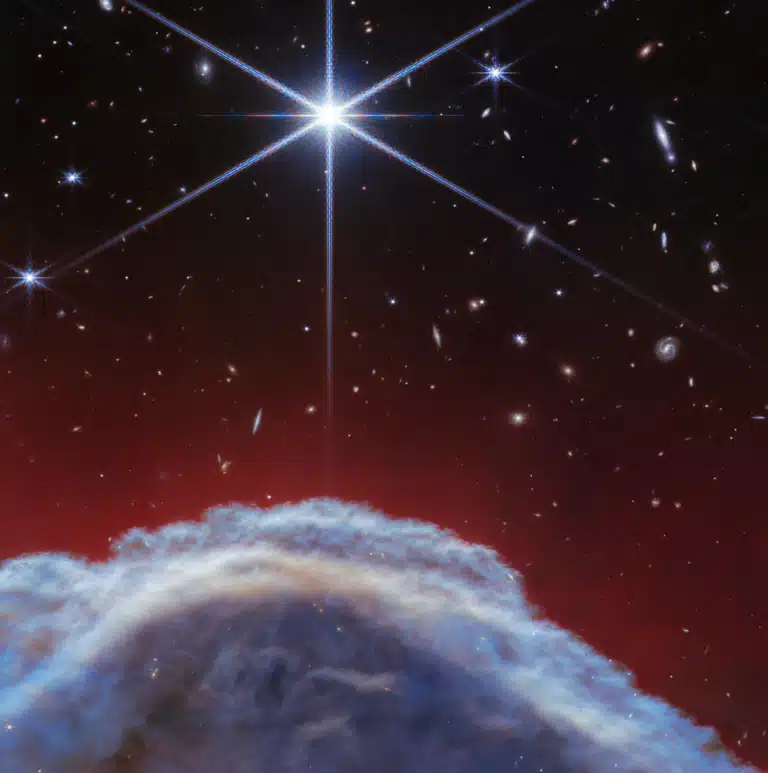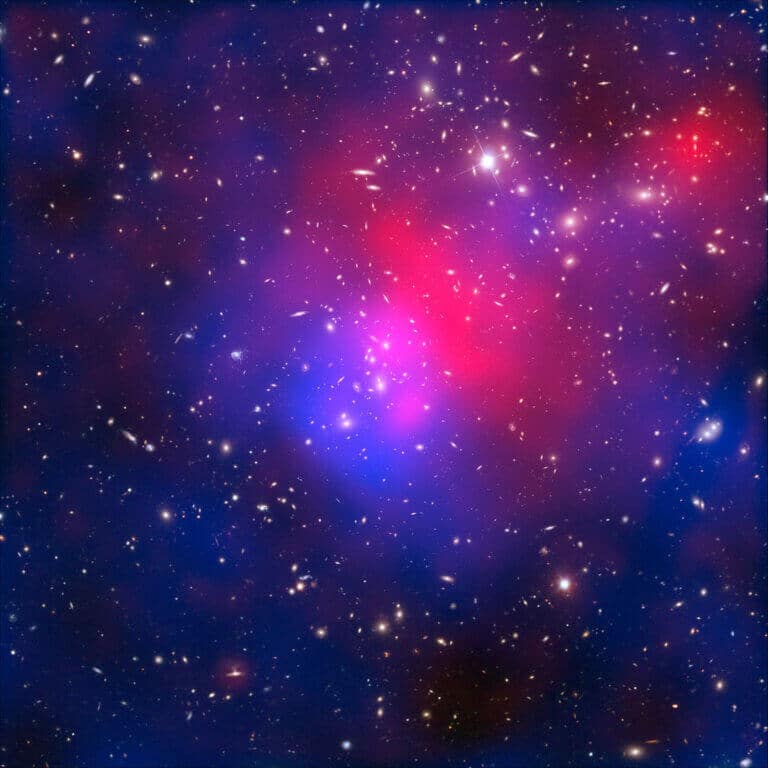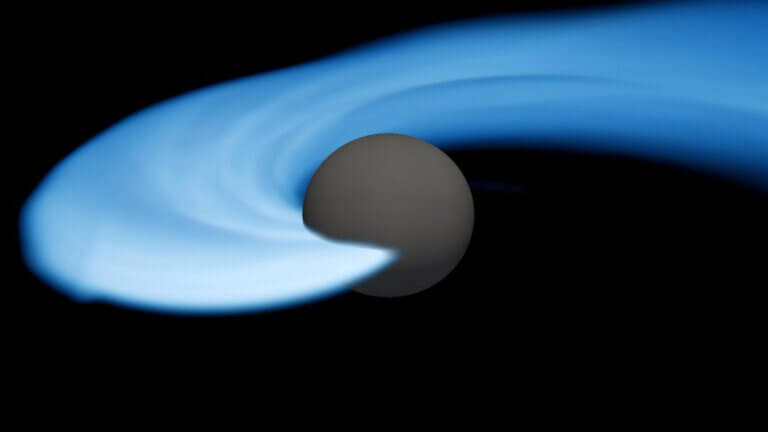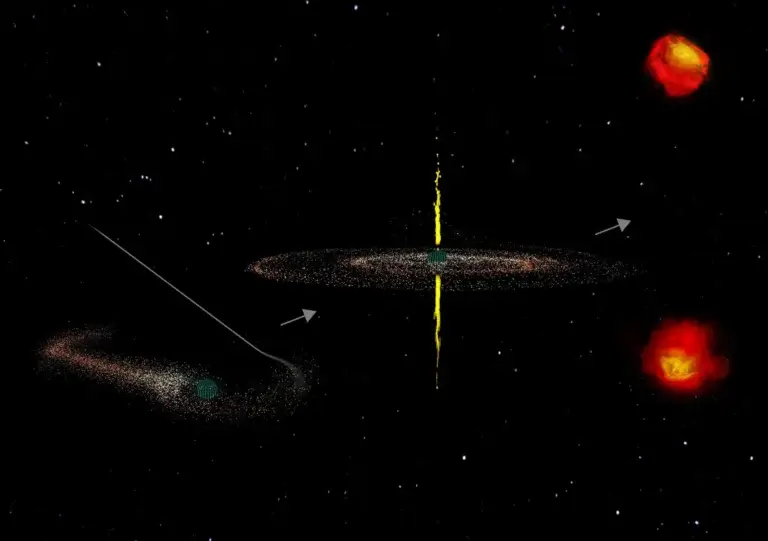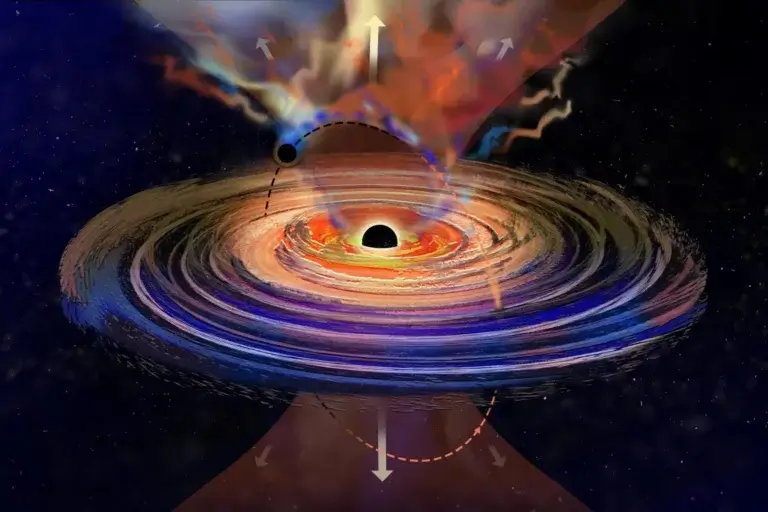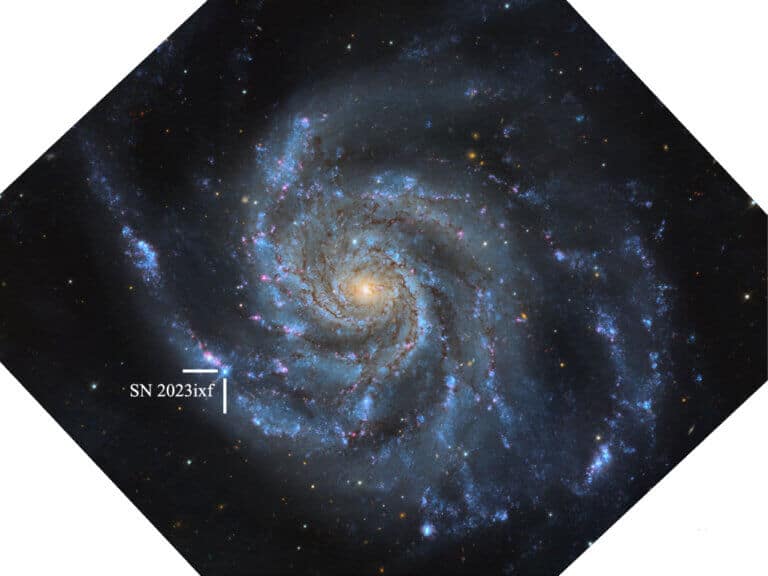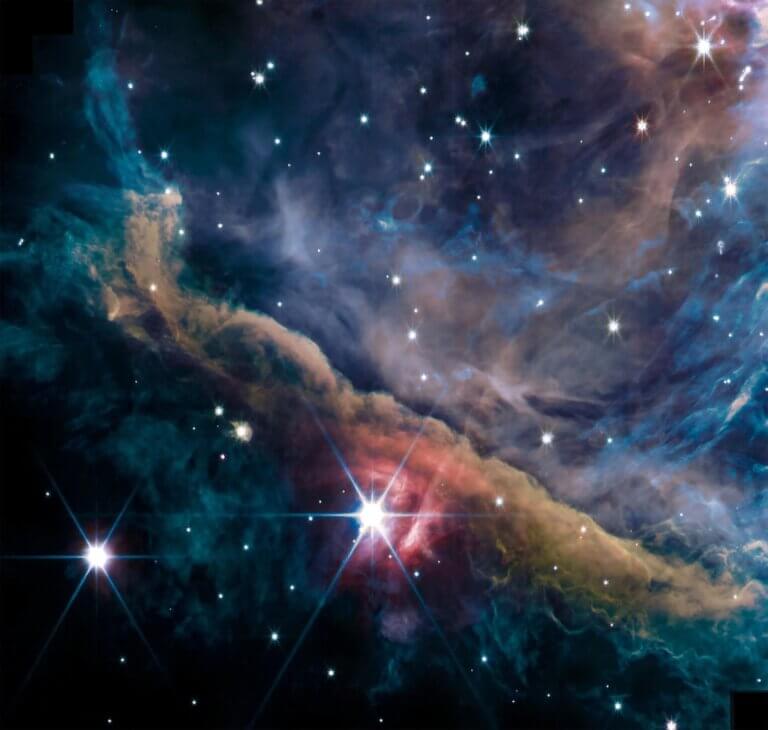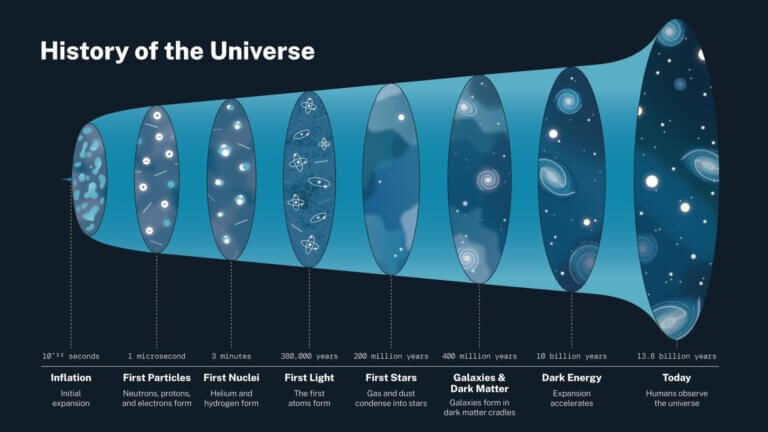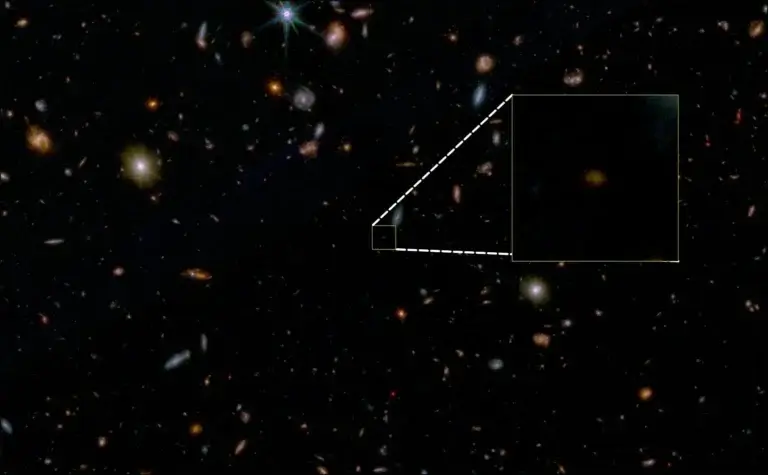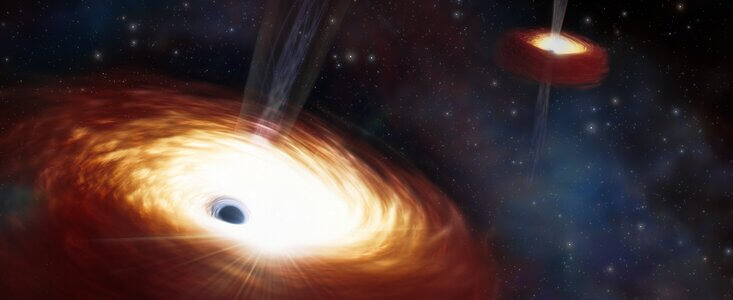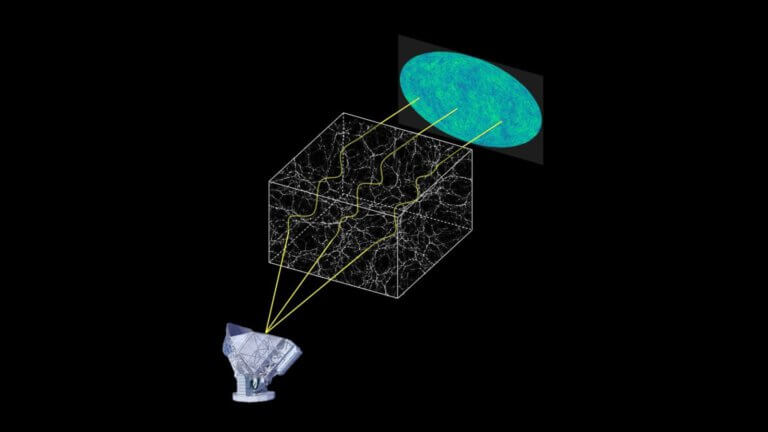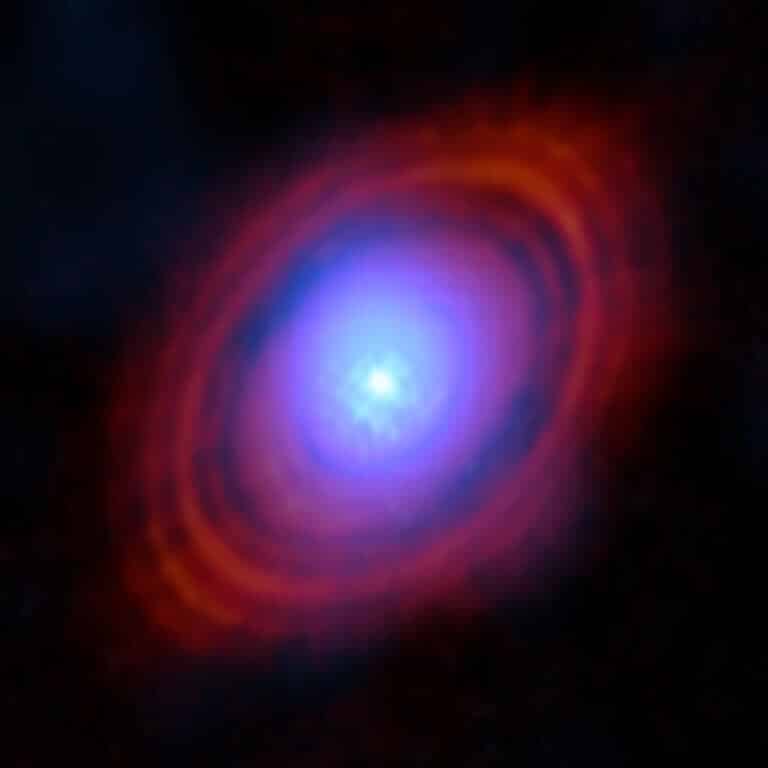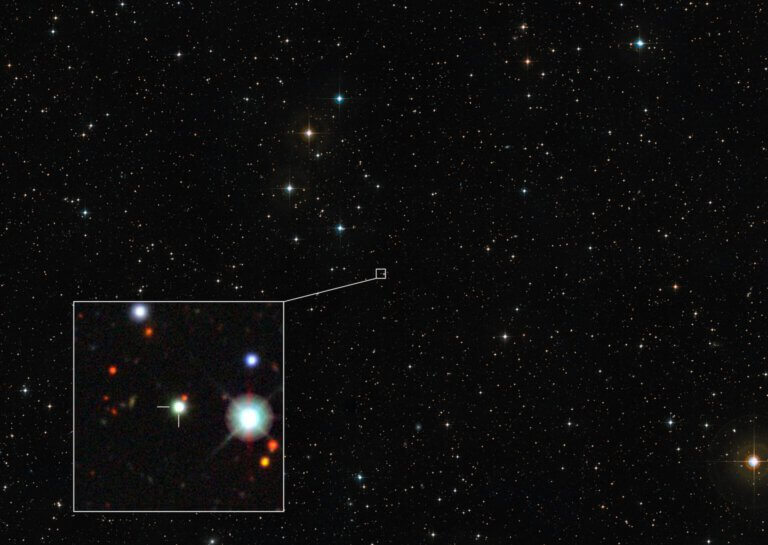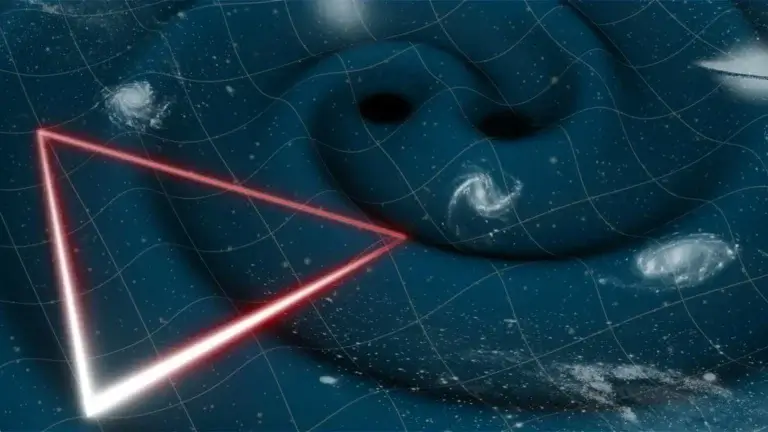Hayadan > Space and astronomy > Astrophysics
Astrophysics
- Avi Blizovsky
- May 1, 2024
- No comments
- Davidson Institute
- April 27, 2024
- 9 תגובות
James Webb Space Telescope observations of galaxies in the young universe revealed that the first light in space came from bright young stars
- Avi Blizovsky
- April 21, 2024
- 2 תגובות
The analysis of the signal GW230529 picked up by LIGO shows that it originated from the merger of two compact objects, one with a mass between 1.2 and 2.0 times that of the Sun and the other with a mass slightly more than twice the first
- Avi Blizovsky
- April 18, 2024
- 2 תגובות
A new study reveals details of an unknown class of galaxies called compact compact objects (CSOs) that emit jets moving in opposite directions at speeds close to the speed of light
- Avi Blizovsky
- April 16, 2024
- 3 תגובות
The plan is to place five small satellites in space close to the Webb Space Telescope. Together these telescopes will act as a large telescope that will be used as an interferometer to receive infrared heat radiation from extrasolar planets. Finding life on Earth will give a good calibration of the spacecraft
- Avi Blizovsky
- April 12, 2024
- No comments
Professor Maza studied planets outside the solar system and even developed a method for discovering planets that allows expanding the search circle
- Avi Blizovsky
- April 7, 2024
- 3 תגובות
The CSOs emit jets for 5,000 years or less and then die out. "The CSO jets are very energetic jets but they seem to end, the jets stop flowing from the source
- Avi Blizovsky
- April 5, 2024
- One response
In a distant galaxy, the supermassive black hole's intermittent gas fluxes led to the discovery of a smaller black hole in its orbit
- The Voice of Science website - the Israel National Science Foundation
- April 2, 2024
In interstellar molecular clouds, large molecules can form despite the non-ideal conditions prevailing there
- Avi Blizovsky
- April 1, 2024
- No comments
Scientists used Bayesian network analysis to study how scientific discoveries influence science fiction literature
- Weizmann Institute
- March 28, 2024
- Avi Blizovsky
- March 25, 2024
- 3 תגובות
A research partnership between theoretical physicists and computational physicists at the University of Virginia that may offer new insight into the possibility of a theory of everything or, at the very least, a better understanding of gravity, one of the fundamental forces of the universe
- Avi Blizovsky
- March 24, 2024
- No comments
According to the new paper, in some white dwarfs, the dense plasma in the interior doesn't simply freeze from the inside out. Instead, the solid crystals that form upon freezing are less dense than the liquid, and therefore want to float, then push the liquid inside
- Avi Blizovsky
- March 22, 2024
- No comments
Researchers studying the Orion Nebula with the James Webb Space Telescope found that ultraviolet radiation from massive stars prevents the formation of giant planets in young systems by scattering their building materials.
- Avi Blizovsky
- March 21, 2024
- 10 תגובות
A new study, led by the UK's University of Bath, has found that supermassive black holes need both merging galaxies and cold gas to grow. This discovery, obtained through machine learning, may change our understanding of galaxy evolution
- Avi Blizovsky
- March 17, 2024
- 13 תגובות
This is according to the Dark Energy Survey Partnership, of which University College London is a founding member, hosts the Fermi National Accelerator Laboratory in the United States and includes more than 400 scientists from 25 institutions in 7 countries
- Avi Blizovsky
- March 14, 2024
- 8 תגובות
Researchers in Germany have developed an artificial intelligence capable of postulating physical theories by identifying patterns in complex data sets and after being fed all known physics
- Avi Blizovsky
- March 13, 2024
- No comments
This galaxy experienced a tumultuous and fast life: the star formation process worked quickly and suddenly ended, a situation that is not expected at such an early stage in the evolution of the universe. It is still unclear whether the "frozen" state of the galaxy is temporary or permanent, and what is the reason for the cessation of the star formation process
- Avi Blizovsky
- March 12, 2024
- 8 תגובות
Webb's measurements provide new light on a decade-long mystery known as the Hubble voltage - the differences in the age of the universe between the Hubble observations and past observations that remain unexplained * Prof. Adam Ries, winner of the Nobel Prize in Physics for the discovery of dark energy heads the project
- Avi Blizovsky
- March 3, 2024
- 2 תגובות
Data from the Gemini North Telescope provide a possible explanation for the halting of the merger of a pair of supermassive black holes at the center of a galaxy
- Avi Blizovsky
- March 2, 2024
- 6 תגובות
Argon is part of a multi-institutional effort to survey the skies for clues about the origins and nature of our universe.
- Avi Blizovsky
- March 1, 2024
- 3 תגובות
An amount of water at least three times greater than the water in all the Earth's oceans was discovered in the inner disk of the young Sun-like star HL Tauri, 450 light-years away from Earth, in the Taurus group
- Avi Blizovsky
- February 23, 2024
- No comments
The material being pulled toward this disk-shaped black hole emits so much energy that J0529-4351 is more than 500 trillion times brighter than the Sun
- Avi Blizovsky
- February 18, 2024
- No comments
The discovery of an S-shaped galaxy could revolutionize the understanding of the process of star formation
- Avi Blizovsky
- February 17, 2024
- 7 תגובות
The European Space Agency gets the green light for the first space observatory of its kind, dedicated to revealing space-time vibrations.

